Content delivery networks (CDN) are critical to the success of streaming platforms. Without their huge networks and experienced engineers, streaming video experiences might be spotty at best. Resilience, consistency, scalability… achieving those streaming platform attributes requires the use of multiple CDNs. But managing multiple delivery networks is hard enough when they all provide their own logs and their own visualization tools. Savvy streaming providers often build complex systems and tools to not only switch quickly between CDNs but also to collect all that log data, normalize it, and visualize it for use by operations engineers.
But just understanding which CDN is doing well isn’t enough. Identifying root cause is often a collaborative approach between multiple CDNs, streaming operations, and other engineers. To facilitate that, though, everyone has to be able to trace data from each system to the same playback…and that means access to a unified set of data.
Step 1: Setup a Video Data Platform for Your CDN’s
The first step is to implement a video data platform. This platform serves the central purpose of aggregating all of the data, from different providers and sources, and normalizing it against a standard, agreed-upon set of data elements. In many cases, this will be the streaming operator. As the owner of all the data for their streaming video technology stack, the operator can provide access to any third-parties, such as the various CDNs. In an ideal world, the video data platform will support programmatic access so that the data can be consumed by other services, like a visualization tool.
Step 2: Create Shared Dashboards
Now that you have a video data platform, which is collecting, normalizing, and storing all of the data from the workflow, you can create dashboards representing different aspects of performance monitoring. For example, you might have a QoE dashboard which includes a CDN provider in addition to all of the telemetry coming from the player. By giving access to the CDN reflected in the dashboard, the streaming operator can work hand-in-hand to identify root-cause issues involving that delivery network. What’s more, CDN network and operations engineers can see other data to which they might not normally be privy. They can see how potential issues in their delivery may be impacting aspects of the viewer experience such as start-up time, video exits (because of latency or buffering), etc.
The Modern Day Rosetta Stone
This approach to creating a unified solution for streaming video telemetry data is as much one of enabling collaboration as it is gaining consensus. Part of the issue with a streaming video operator sharing data with others in its provider ecosystem is the disconnection on the data itself. Providers may have different measurements, different data names, different values, etc. This can all create confusion when the streaming operator complains about a low value which the provider is measuring as normal or high. The video data platform can be like a Rosetta Stone within a provider ecosystem. Through normalization against a standard set of data elements, there is no longer any reason to compare data sets or data values.
Not Just a Unified Solution for Ecosystem Providers
Of course, having this kind of solution is great for getting third-party providers, like CDNs, onto the same page as the streaming operator. But a video data platform, collecting data from throughout the streaming workflow, both internal and external components, can also help to standardize the metrics, measurements, and values that are used to drive the business. Marketing, for example, may already have their own way of calculating a viewer engagement rate. But if that rate is calculated within the video data platform by employing specific metadata collected from the player, marketing doesn’t have to do that work anymore and doesn’t have to justify or validate its approach. They can simply point to a shared dashboard that captures and visualizes the metrics important to them.
Part of the Value Is In the Conversation Itself
Of course, having all of the ecosystem providers like CDNs working from the same playback is ideal. But setting up this kind of solution can also be collaborative. Streaming operators can involve a variety of vested parties such as CDN operations and network engineers to help identify what’s important, the thresholds for values, and the data elements themselves. When this solution is approached in such a manner, when conversations happen between streaming operator resources and third-party resources, everyone has skin in the game. The conversation about the solution itself, even before conversations involving the shared dashboard, serves to align everyone closer together. And that kind of collaboration is just as valuable as having a unified data solution.
The post CDN Management: The Secret to the Future Success of Streaming Video Platforms appeared first on Datazoom.


